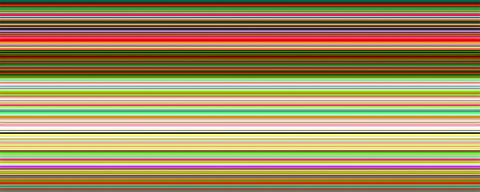Back in Taipei this weekend for its 21st year with the theme Dear Art, Art Taipei takes a huge stride by bridging communication between the world of high art and the public.
“We are aiming to be the new hub of Asian art,” said Eva Lin (林怡華), the director of Art Taipei.
This year’s exhibition will showcase a variety of artwork created by Taiwanese and foreign talents, alongside educational and interactive workshops open to the public. Lin told the Taipei Times that in addition to the usual contenders from China, Japan and Korea, there will be more representation from Southeast Asia this year.

Photo courtesy for Taiwan Art Gallery Association
“People normally come to Taiwan expecting to see Chinese art, but Taiwan is also in a great location geographically to feature artwork by Southeast Asian artists,” she said.
Lin says that compared the Northeast Asia, artwork from Southeast Asia tends to be more vivid and distinguishable. Viewers who are not necessarily art critics can more easily tell if this piece is from Thailand or Malaysia. Such is not the case for Taiwan — at least in the eyes of international art community, Taiwanese art is still somewhat of a subcategory of Chinese art.
However, it doesn’t bother Lin that art critics and buyers are flocking to cities like Shanghai, Hong Kong or Singapore. These places may be where all the big bucks are flowing, but Taipei has something invaluable in the world of high art — soul and authenticity.
“We are not emphasizing a commercial, McDonalds-like approach,” Lin said.
Lin added that the Hong Kong approach to selling art might be “very western and very international,” but she says that art fairs like Art Taipei are trying to emphasize more inclusivity.
“Art is like therapy,” Lin says, “everyone has different ways of communicating with art and if a piece makes you feel uncomfortable, it is simply not the right piece of artwork for you.”
When faced with commentary on how Taiwan’s art scene has to become more “international” in order to succeed, Lin says the term “international” can be subjective and she prefers to use the phrase “internationally aware.”
In other words, Taiwanese artists should be aware of what other artists around the world are doing, but there is no need to repackage the entire art market here such that it will fit better for global consumerism.
As Lin said, “there are two values of art, one is the market value and the other is the educational value.”
Art Taipei aims at developing the educational value in hopes that greater public understanding of art will ultimately drive up its market value.

That US assistance was a model for Taiwan’s spectacular development success was early recognized by policymakers and analysts. In a report to the US Congress for the fiscal year 1962, former President John F. Kennedy noted Taiwan’s “rapid economic growth,” was “producing a substantial net gain in living.” Kennedy had a stake in Taiwan’s achievements and the US’ official development assistance (ODA) in general: In September 1961, his entreaty to make the 1960s a “decade of development,” and an accompanying proposal for dedicated legislation to this end, had been formalized by congressional passage of the Foreign Assistance Act. Two

Despite the intense sunshine, we were hardly breaking a sweat as we cruised along the flat, dedicated bike lane, well protected from the heat by a canopy of trees. The electric assist on the bikes likely made a difference, too. Far removed from the bustle and noise of the Taichung traffic, we admired the serene rural scenery, making our way over rivers, alongside rice paddies and through pear orchards. Our route for the day covered two bike paths that connect in Fengyuan District (豐原) and are best done together. The Hou-Feng Bike Path (后豐鐵馬道) runs southward from Houli District (后里) while the

On March 13 President William Lai (賴清德) gave a national security speech noting the 20th year since the passing of China’s Anti-Secession Law (反分裂國家法) in March 2005 that laid the legal groundwork for an invasion of Taiwan. That law, and other subsequent ones, are merely political theater created by the Chinese Communist Party (CCP) to have something to point to so they can claim “we have to do it, it is the law.” The president’s speech was somber and said: “By its actions, China already satisfies the definition of a ‘foreign hostile force’ as provided in the Anti-Infiltration Act, which unlike

Mirror mirror on the wall, what’s the fairest Disney live-action remake of them all? Wait, mirror. Hold on a second. Maybe choosing from the likes of Alice in Wonderland (2010), Mulan (2020) and The Lion King (2019) isn’t such a good idea. Mirror, on second thought, what’s on Netflix? Even the most devoted fans would have to acknowledge that these have not been the most illustrious illustrations of Disney magic. At their best (Pete’s Dragon? Cinderella?) they breathe life into old classics that could use a little updating. At their worst, well, blue Will Smith. Given the rapacious rate of remakes in modern